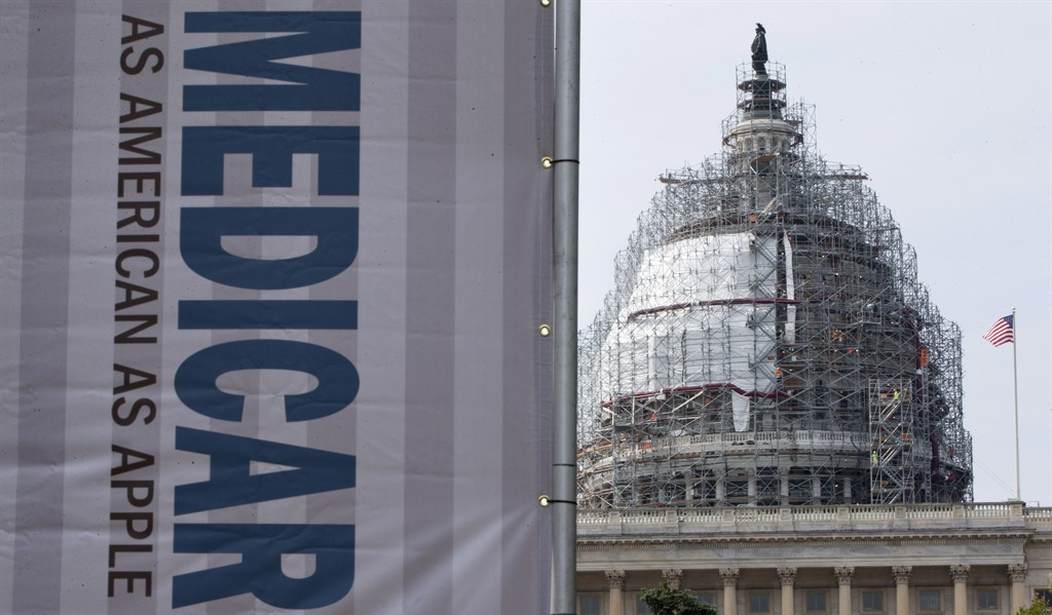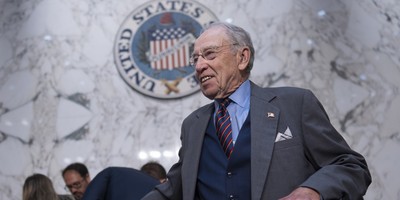Thirty-two years ago, the United States of America unified behind the re-election of Ronald Reagan as president, giving him an Electoral College victory of 525 to 13.
Walter Mondale, Reagan's opponent, only managed to win his home state of Minnesota and the federal government's homeland of Washington, D.C.
Reagan, according to the National Archives, won 54,455,075 popular votes in 1984 -- more than any presidential candidate up to that point. Mondale won only 37,577,185.
After Reagan's 1984 landslide, the national population grew, but the popular and Electoral College vote totals of winning presidential candidates declined.
Two full decades would pass before any candidate would eclipse Reagan's record 54,455,075 in the popular vote. No subsequent president has come close to his 525 Electoral College votes.
And none has argued as forcefully for limited government.
In 1988, George H.W. Bush defeated Michael Dukakis 48,886,097 to 41,809,074 in the popular vote and 426 to 111 in the Electoral College.
In 1992, Bill Clinton defeated Bush 44,908,254 to 39,102,343 in the popular vote -- with Ross Perot taking 19,741,065 votes. Clinton won the Electoral College 370 to 168.
In 1996, Clinton defeated Bob Dole 45,590,703 to 37,816,307 in the popular vote -- with Perot taking 7,866,284 votes. Clinton won the Electoral College 379 to 159.
Recommended
In 2000, George W. Bush lost the popular vote to Al Gore 50,456,062 to 50,996,582, but won the Electoral College 271 to 266.
In 2004, Bush defeated John Kerry 60,693,281 to 57,355,978 in the popular vote -- with both candidates, after 20 years, eclipsing Reagan's 1984 record of 54,455,075. Bush won the Electoral College that year by 286 to 251.
Four years later, Barack Obama set yet a new record for the popular vote, defeating John McCain 69,297,997 to 59,597,520 and taking the Electoral College 365 to 173.
In 2012, Obama's popular vote dropped to 65,444,241, but he still outpolled Romney, who took 60,587,978. In the Electoral College, Obama won 332 to 206.
But no candidate for president has ever won as many popular votes as the number of people currently enrolled in Medicaid and the Children's Health Insurance Program.
Back in the July-to-September period of 2013, according to the Centers for Medicare and Medicaid Services, the average monthly enrollment in Medicaid and CHIP was 56,392,477.
As this column noted last week, CMS has reported that as of July there were 72,810,267 people enrolled in Medicaid and CHIP. This is more people than have ever voted for any candidate running for president of the United States.
Some people may ask: Why does this matter?
Many of the people enrolled in Medicaid and the Children's Health Insurance Program are not eligible to vote. Many, obviously, are children and not old enough to vote.
But the expansion of Medicaid and CHIP illustrates a fundamental change in the relationship between Americans and the federal government. These programs did not exist 55 years ago, when John F. Kennedy was president. Now, like other so-called "means-tested entitlements," they divide Americans into two groups: Those who take them, and those who pay for them.
In the middle is the federal government, which takes from those who are not dependent on it and gives to those who are.
All Americans are forced to be on one side or the other. Either they become dependent on the government or they pay the government so others can be.
On both sides, individuals lose power over their own lives. In the middle, the government gains power over both.

























Join the conversation as a VIP Member